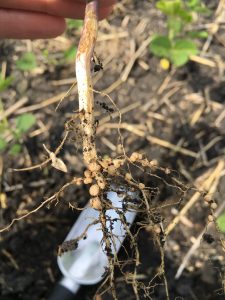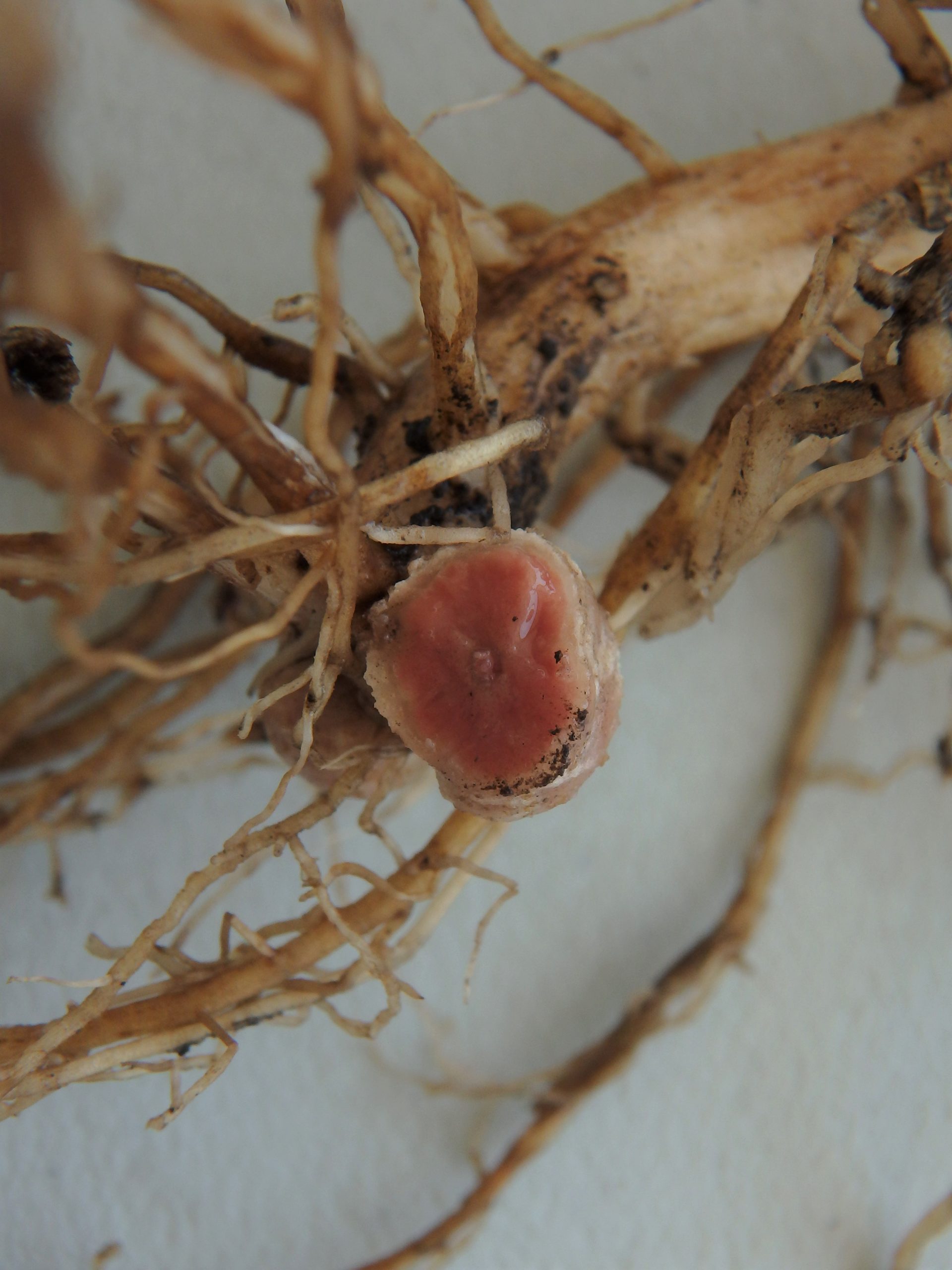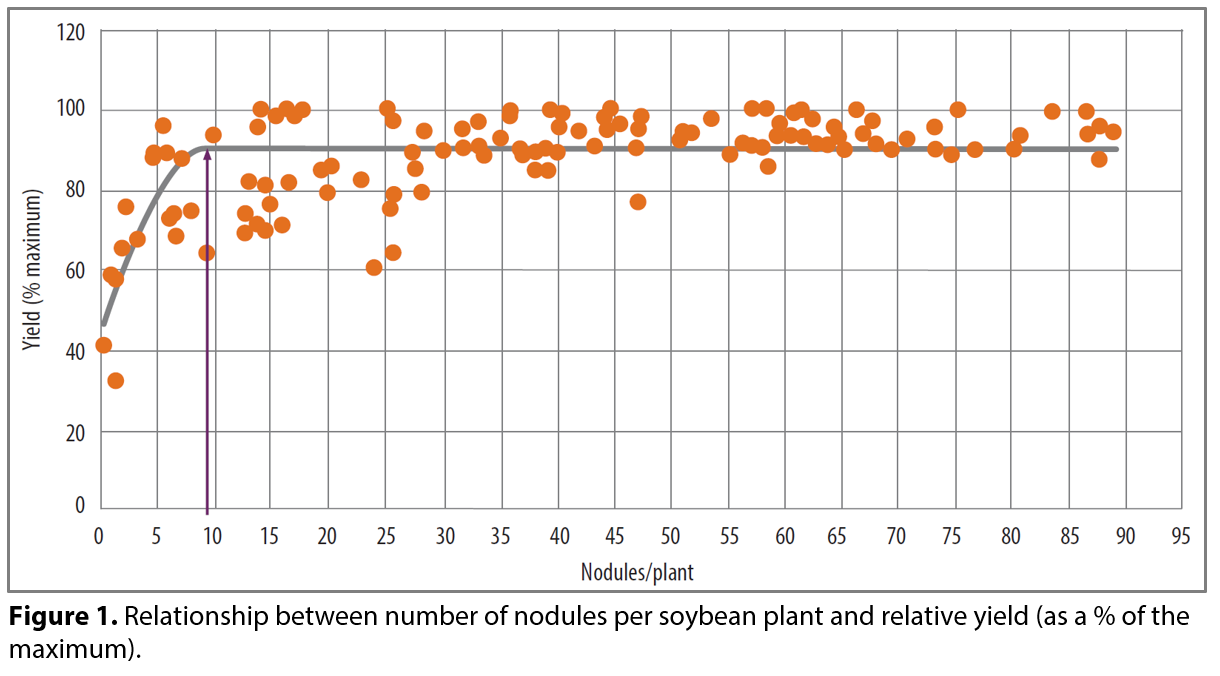Timing
Assess soybean root nodules each year, regardless of the field history or inoculant strategy. The ideal time to assess nodulation is at the R1 (beginning bloom) stage. Root nodule assessment at this stage gives a clear picture of whether or not a crop has sufficient ability to produce its own nitrogen (N) via biological N fixation. The critical period for adequate N supply to soybeans is R4 (full pod) to R5 (beginning seed) for maximized yield.
Method
- Assess root nodules on 5-10 plants from 2-3 different areas of the field.

- Use a shovel to gently dig out each root system. Soak the roots in a pail of water to remove soil, as nodules can easily be stripped from the lateral roots during extraction. Nodules will be located closer to the main stem if inoculant was seed-applied and on lateral roots if inoculant was placed in the furrow.
- Count the number of nodules per plant. If there is a wide variation between nodule counts, select more plants for an accurate estimate across the field.
- Cut a few nodules open to assess the colour. If the nodules are pinkish-red inside, they are actively fixing N. Leghemoglobin in the nodules, like hemoglobin in blood, is produced by rhizobia bacteria during N-fixation and changes colour when exposed to oxygen.
- While the roots are exposed, take the opportunity to look for any root rot that may be present and take note of the shape and growth pattern of roots. For example, roots may grow to the side if there are compaction issues.
What is considered adequate nodulation?
An MPSG-led study evaluated different inoculant products, rates and formulations. Results showed that soybean plants need at least 10 nodules per plant, regardless of size, to reach 90% of maximum yield (Figure 1).1
Rescue Nitrogen Treatment
If the crop appears yellowish-green in colour and nodules are either absent or not actively fixing N, a rescue application of N may be necessary at R2 (full flower) to R3 (early pod). Broadcast granular N or direct liquid N below the crop canopy at 50 lbs N/ac.2 Note that liquid N contact with leaf material can burn the foliage and reduce yield.
References
1 Manitoba Pulse & Soybean Growers. 2019. Assessing soybean inoculant strategies. Pulse Beat: Science Edition. 3:2.
2 John Heard, Gustavo Bardella and Kristen Podolsky. 2014. Rescue nitrogen applications on poorly nodulated soybeans in Manitoba. Manitoba Agronomists Conference Poster.

